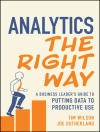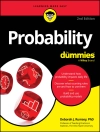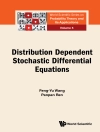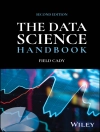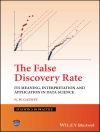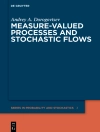A resource for probability AND random processes, with hundreds ofworked examples and probability and Fourier transform tables
This survival guide in probability and random processes eliminatesthe need to pore through several resources to find a certainformula or table. It offers a compendium of most distributionfunctions used by communication engineers, queuing theoryspecialists, signal processing engineers, biomedical engineers, physicists, and students.
Key topics covered include:
* Random variables and most of their frequently used discrete andcontinuous probability distribution functions
* Moments, transformations, and convergences of randomvariables
* Characteristic, generating, and moment-generating functions
* Computer generation of random variates
* Estimation theory and the associated orthogonalityprinciple
* Linear vector spaces and matrix theory with vector and matrixdifferentiation concepts
* Vector random variables
* Random processes and stationarity concepts
* Extensive classification of random processes
* Random processes through linear systems and the associated Wienerand Kalman filters
* Application of probability in single photon emission tomography(SPECT)
More than 400 figures drawn to scale assist readers inunderstanding and applying theory. Many of these figures accompanythe more than 300 examples given to help readers visualize how tosolve the problem at hand. In many instances, worked examples aresolved with more than one approach to illustrate how differentprobability methodologies can work for the same problem.
Several probability tables with accuracy up to nine decimal placesare provided in the appendices for quick reference. A specialfeature is the graphical presentation of the commonly occurring Fourier transforms, where both time and frequency functions aredrawn to scale.
This book is of particular value to undergraduate and graduatestudents in electrical, computer, and civil engineering, as well asstudents in physics and applied mathematics. Engineers, computerscientists, biostatisticians, and researchers in communicationswill also benefit from having a single resource to address mostissues in probability and random processes.
เกี่ยวกับผู้แต่ง
VENKATARAMA KRISHNAN, Ph D, is Professor Emeritus in the Department of Electrical Engineering at the University of Massachusetts Lowell. Previously, he has taught at the Indian Institute of Science, Polytechnic University, the University of Pennsylvania, Princeton University, Villanova University, and Smith College. He also worked for two years (1974-1976) as a senior systems analyst for Dynamics Research Corporation on estimation problems associated with navigation and guidance and continued as their consultant for more than a decade. Professor Krishnan’s research interests include estimation of steady-state queue distributions, tomographic imaging, biosystems, and digital, aerospace, control, communications, and stochastic systems. As a senior member of IEEE, Dr. Krishnan has authored three other books in addition to technical publications.




